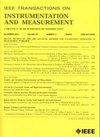Multivariate Variable-Step Multiscale Extended Dispersion Entropy-Based Lempel–Ziv Complexity and Its Application in Fault Diagnosis
IF 5.9
2区 工程技术
Q1 ENGINEERING, ELECTRICAL & ELECTRONIC
IEEE Transactions on Instrumentation and Measurement
Pub Date : 2025-06-19
DOI:10.1109/TIM.2025.3580860
引用次数: 0
Abstract
Extended dispersion entropy-based Lempel–Ziv complexity (EDELZC) can measure the irregularity or chaos of single-channel time series, which is one of the ideal tools for extracting fault features from rotating machinery. However, EDELZC is only suitable for single-scale and single-channel time-series analysis, which affects the effective extraction of fault features. To solve this problem, the multivariate embedding and variable-step multiscale techniques are integrated, and the multivariate variable-step multiscale EDELZC (MvVSMEDELZC) is developed, which achieves the characterization of multichannel feature information at different time scales. Moreover, in order to improve the recognition accuracy, the crayfish optimization algorithm (COA) is applied to optimize the parameters of the kernel extreme learning machine (KELM), and a new fault diagnosis method is proposed in combination with MvVSMEDELZC. The simulated signal experiments verify the ability of MvVSMEDELZC to detect dynamic changes in complex signals. The practical rotating machinery fault diagnosis experiments show that compared with other methods, the proposed fault diagnosis method offers superior accuracy and efficiency in identifying the condition of bearings and gears, which indicates its superior performance in properties in diagnosing rotating machinery faults.基于多元变步多尺度扩展色散熵的Lempel-Ziv复杂度及其在故障诊断中的应用
基于扩展色散熵的Lempel-Ziv复杂度(EDELZC)可以测量单通道时间序列的不规则性或混沌性,是提取旋转机械故障特征的理想工具之一。然而,EDELZC仅适用于单尺度、单通道的时间序列分析,影响了故障特征的有效提取。为了解决这一问题,将多变量嵌入和变步长多尺度技术相结合,开发了多变量变步长多尺度EDELZC (MvVSMEDELZC),实现了多通道特征信息在不同时间尺度下的表征。此外,为了提高识别精度,将小龙虾优化算法(COA)应用于核极限学习机(KELM)的参数优化,并结合MvVSMEDELZC提出了一种新的故障诊断方法。仿真信号实验验证了MvVSMEDELZC检测复杂信号动态变化的能力。实际的旋转机械故障诊断实验表明,与其他方法相比,所提出的故障诊断方法在识别轴承和齿轮的状态方面具有更高的精度和效率,表明该方法在诊断旋转机械故障方面具有优越的性能。
本文章由计算机程序翻译,如有差异,请以英文原文为准。
求助全文
约1分钟内获得全文
求助全文
来源期刊

IEEE Transactions on Instrumentation and Measurement
工程技术-工程:电子与电气
CiteScore
9.00
自引率
23.20%
发文量
1294
审稿时长
3.9 months
期刊介绍:
Papers are sought that address innovative solutions to the development and use of electrical and electronic instruments and equipment to measure, monitor and/or record physical phenomena for the purpose of advancing measurement science, methods, functionality and applications. The scope of these papers may encompass: (1) theory, methodology, and practice of measurement; (2) design, development and evaluation of instrumentation and measurement systems and components used in generating, acquiring, conditioning and processing signals; (3) analysis, representation, display, and preservation of the information obtained from a set of measurements; and (4) scientific and technical support to establishment and maintenance of technical standards in the field of Instrumentation and Measurement.
 求助内容:
求助内容: 应助结果提醒方式:
应助结果提醒方式:


